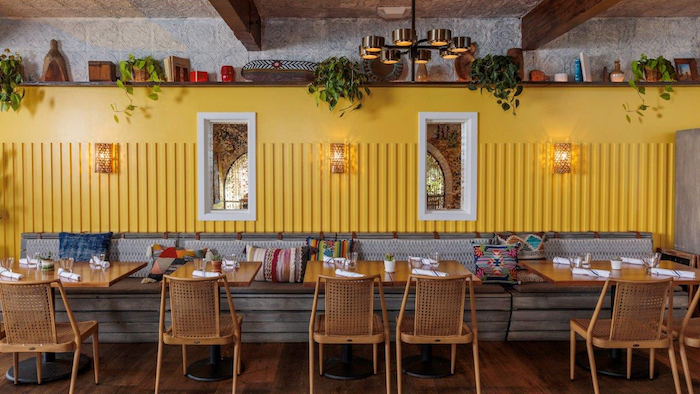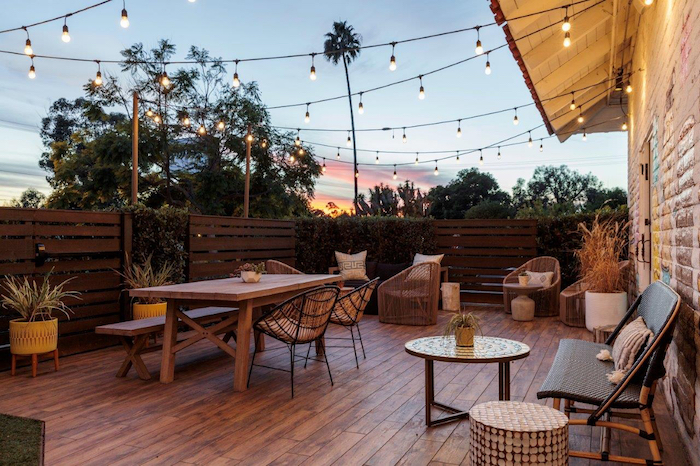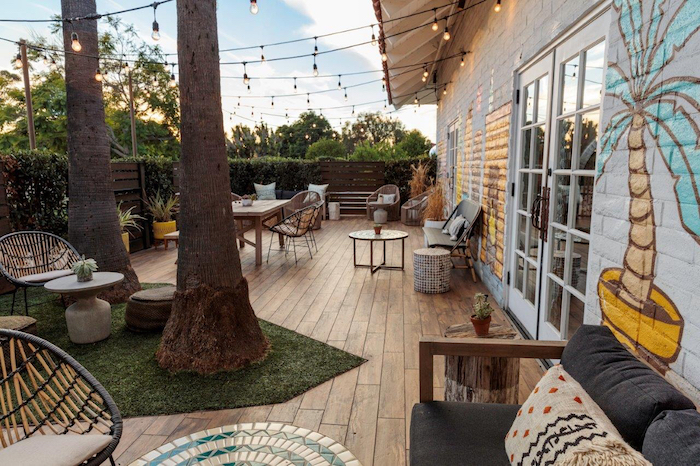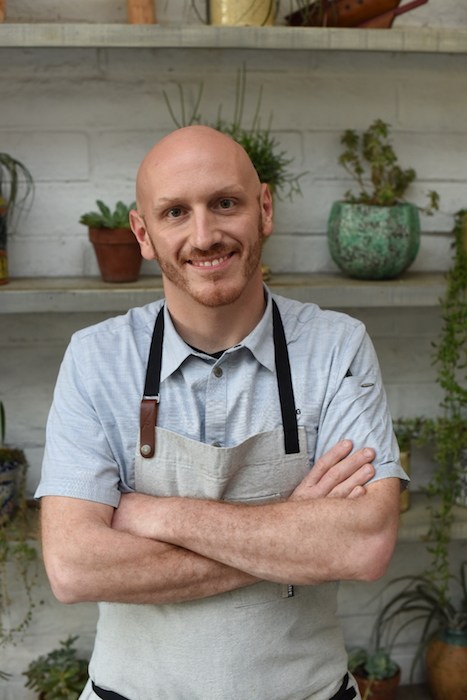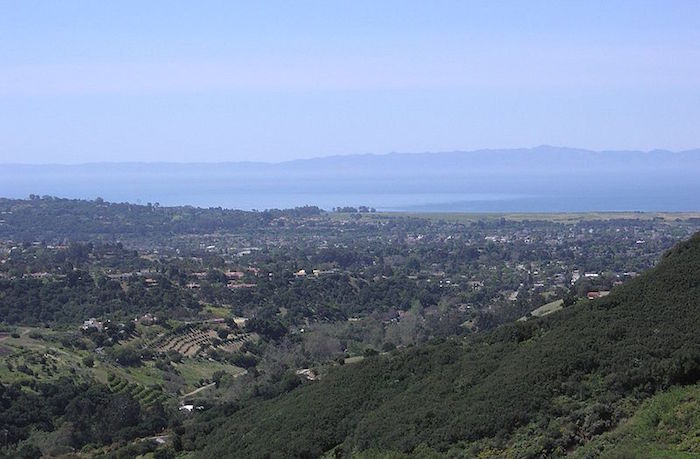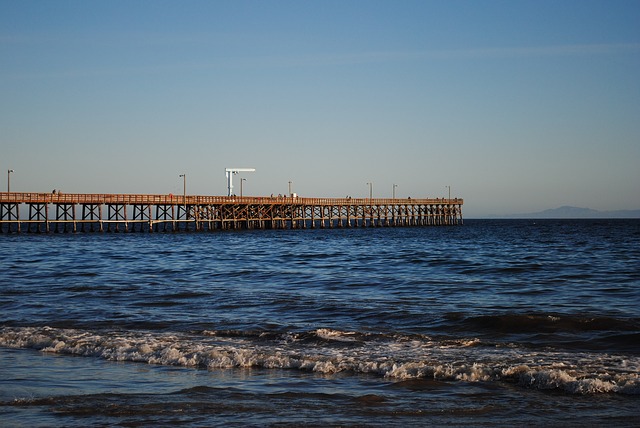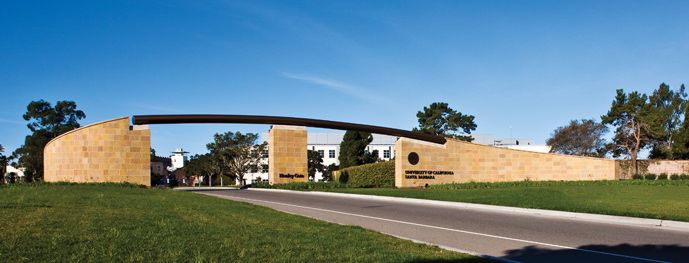
UCSB (courtesy photo)
Goleta’s proximity to UCSB helps enrich the community in a myriad of ways. As Santa Barbara County’s largest employer, with almost 10,000 people on staff, the University obviously brings tremendous financial resources to the area. UCSB provides at least five percent of the county’s economy and more than eight percent of the South Coast’s economy, according to Bill Watkins, Executive Director of the UCSB Economic Forecast Project.
A critical point about the dollars that UCSB brings to the community, Watkins says, is that “it’s not a volatile source of economic activity… Agriculture can be volatile, certainly manufacturing can, lots of industries can be very cyclical, and for the most part this is not particularly cyclical and it also has a fair number of pretty well-paying jobs.”
But the dollars UCSB brings in are just a small part of its contributions to Goleta.
“In addition to being a leading research university recognized around the world, UC Santa Barbara is an integral part of our community,” says Chancellor Henry Yang. ” Our public service mission includes working with our local partners to develop programs and projects to enhance the quality of life in this region. Our reach extends into many areas of activity, from educational outreach and economic forecasting to community health and technology transfer.”
Yang continues: “We feel fortunate to be located in such a special, beautiful place, and our community is very supportive of our mission. In return we offer community members a rich variety of activities to sample and enjoy, from lectures and performances to athletic events, recreational programs and facilities, extension courses, and personal development classes.”
As Vice Chancellor John M. Wiemann explains, “We are part of this community. We’re here, we’re your neighbors, just like you’re our neighbors…we breathe the same air, drive on the same roads, our kids go to the same schools. So we’re really part of the community. We’re people who coach Little League teams, participate in PTA’s, do all the things that everybody else does who have other jobs, we just happen to work at the University.”
Wiemann continues, “… probably the best thing we do is we bring 20,000 really smart, interesting kids here every year that contribute in a variety of ways to the local area, just by being who they are. They volunteer here. …Students also provide a work force for local businesses, especially local merchants and hotels.”
UCSB also brings wonderful cultural resources to the community. Itzak Perlman, Jon Stewart, Gary Trudeau, Bobby McFerrin, Amy Tan, and Yo Yo Ma are just a few of the talents who will perform this year as part of the UCSB Arts & Lectures series.
“It is just a stunning list of people that otherwise wouldn’t be in Santa Barbara,” says Wiemann. “No matter what your intellectual interest is, you can find somebody at UCSB talking about it every month…”
In addition, the University and the UCSB Affiliates bring a wealth of enrichment out into the community. Recent programs include: Health Care, Mortality, and Obesity” “Nuclear Nations,” “Sustainability,” and visits to the Los Angeles Opera.
Sports are also a big draw for the public, with thousands of fans cheering UCSB on to winning the national championship NCAA Division 1 title for men’s soccer in November. The school also fields teams in women’s soccer and softball, and men’s and women’s basketball, cross country, golf, swimming, tennis, track & field, volleyball and water polo, as well as men’s golf and baseball. Along with the full spectrum of spectator sports, the UCSB Recreation Center is the workout site of choice for many Goleta residents with its swimming pools, gymnasiums, weight rooms, squash courts, racquetball courts and climbing wall. The University also runs several after-school and summer recreation programs for children, including community athletic coaching, aquatics classes, gymnastics school, junior lifeguards and surf & kayak camp.
With all of the vibrancy, energy and resources that UCSB brings to Goleta, the University also shares in one of the community’s biggest challenges–the high cost of housing.
“The most pressing issue for the campus is the issue of faculty and staff housing, explains Marc Fisher, Associate Vice Chancellor for Campus Design and Facilities. “We are anticipating about 400 retirements over the next 10 years …of course we’ll have some new hires as well. But that’s a big number.”
“If you think about the housing situation in Santa Barbara and Goleta, when those faculty members retire or go on to another position, the house that they purchased when they purchased it would be unaffordable to incoming faculty. We need to have a supply of housing that’s available for faculty and staff that is affordable so we can make sure that we can continue to retain high quality faculty and staff,” he says.
” It’s a recruiting issue,” agrees Wiemann. “Just like any other company in town will tell you, it’s tough to recruit people into a community where the median house price is over a million dollars.”
With the goal of affordable housing for employees in mind, Fisher and his team of architects, designers and planners have developed an extensive long-term plan for potential housing sites at the University.
The primary goal is “to use campus properties effectively to assist in resolving some of the University’s most pressing problems: the need for affordable work-force housing for faculty and staff, and for expansion of the stock of housing for students,” explains the document, which goes on to acknowledge that booming regional real estate prices have made it “extremely difficult for the University to recruit and retain high quality faculty and staff” so long as employees alone bear the housing burden.
The principles that will guide future housing decisions include: building affordable housing to recruit and retain faculty and staff; building diverse housing types (including for-sale single-family houses, condos, and townhouses, and for-rent apartments) for faculty, staff, and students; incorporating principles of sustainability so that new buildings will meet or exceed LEED (Leadership in Energy and Environmental Design) Silver Standards; building neighborhoods, not projects; preserving and celebrating the environment; and minimizing car dependency.
“I think the thing that this study showed is that we have quite a bit of additional capacity on site and that before we really went out and purchased property we would try to use what we have already,” says Fisher. “We think it’s the most sustainable model.”
Fisher continues” There’s a wonderful term, self-mitigating, you know the way that lets the campus be here and work very closely with the community but lets the campus keep a lot of its impacts very close to the community. We think that actually has the potential to turn into a very rich academic community in and around the campus.”
The Coastal Commission (which has to approve all construction projects on the UCSB campus) recently approved one such housing project. The North Campus faculty and Sierra Madre family housing developments will eventually supply a total of 323 units. The two projects are north and east of Ocean Meadows Golf Course.
Currently under construction is an additional student housing project, San Clemente Housing. Graduate students will be the first ones eligible to live in one of the 327 apartments along El Colegio Road. “We’ll be occupying that in summer 2008,” says Fisher.
While Goleta has had its share of arguments about growth, Fisher says the community has been generally supportive of the University’s need to create more housing. “I think because it is very thoughtful. The idea that you’re building close to work, we’re not building on open space or building on areas that aren’t already developed, we’re not taking the agricultural lands, all the things the community seems to want to do, preserve most of the open space, preserve and protect agricultural land, build on existing sites at higher densities, all those things. And plus the housing is really close to work, so it’s kind of an ideal model in terms of development … I think it’s going to be a very strong community, frankly. There has been generally a pretty good reaction to it.”
He adds, “I think it’s good for the students too because it brings in faculty and staff with the student population, and its going to make it a richer environment, a more traditional college town.”
Also popping up soon–in March 2007–is the new Moser Alumni House. “I think it’s going to be a fantastic building,” says Fisher. Designed by local architect Barry Berkus–a former UCSB student who was named by Residential Architect Magazine as one of the 10 top residential architects of the twentieth century–the project takes full advantage of its spectacular location at the formal entrance to the campus on Mesa Road. “On the roof of that building it has 180 degree views, you can look down to Hope Ranch, you can see the ocean, you can see the bluffs from one direction, and you look around to the north edge and then the west and you can see the full sweep of the mountains all the way out to Gaviota. … It’s pushed out so far from the north edge of campus that it really has sweeping views. It’s quite striking,” says Fisher.
Expected to break ground in February is the first fully donor-funded complex at UCSB, the new Carsey-Wolf Center for Film, Television and New Media. It will be connected with two new academic other buildings, a social science building and the Gevirtz graduate school of education. Located right across from Robb Gym in parking lots 20 and 21, those three buildings constitute about $100 million worth of work, according to Fisher.
There are also several projects nearing completion on Pardall Road, including a parking structure on the west side of campus, a student resource building and a new theatre and dance building, says Fisher.
“The master plan really tries to build buildings in a very logical fashion,” he explains. It tries to build better social breezes between the buildings and a much richer landscape, and I think we’ve done that. There’s a nice open plaza we just put in, and it’s a much different entry sequence from Isla Vista into the campus now. Now you come in it’s not just a parking lot, it’s actually a very pleasant walkway into campus.”
He adds, “starting next fall we’re going to make an addition to the engineering two building. … We have about $870 million worth of work on the campus. It’s quite a package of construction.”
Indeed it is a lot of construction. There are also some renovations of existing buildings taking place, with UCSB’s strong commitment to environmentalism leading the charge behind the University’s recent agreement with the U.S. Green Building Council to use the LEED standards for Existing Building rating system in 25 of its existing buildings over the next five years. LEED is the national benchmark for high performance green buildings.
UCSB has already completed one successful LEED for Existing Building project in Girvetz Hall, and plans to eventually make all of its existing buildings LEED certified. Not only does the University have a strong commitment to the environment, but also “the Chancellor is hugely supportive of this,” says Fisher.
Bren Hall, home of the Donald Bren School of Environmental Science and Management, is a leading example of sustainable architecture and is the only laboratory building in the country to receive the U.S. Green Building Council’s Platinum Leadership in Energy and Environmental Design accreditation. It sets the highest standard for sustainable buildings for the future and is being used as a model for facilities and operations throughout the state.
The Marine Sciences Building is UCSB’s second LEED for New Construction certified building. It features ultra low water use fixtures, preserves natural landscapes and habitat, and is 25 percent more energy efficient than mandated by California’s strict building codes. The Student Resource Building, which is nearing completion, will also be LEED certified.
Within those buildings, the University’s connection to its environment is even more evident.
“The local environment presents us with some really interesting teaching and research opportunities and we try to take advantage of that,” says Wiemann. “We have a very strong marine science program, strong ecology in various places all over the campus, the students, like the rest of our community, are very concerned about the environment and so we have a lot of environmental programs.”
He continues, “We try to take advantage of environment, and take advantage of the unique opportunities that the channel islands and the channel specifically presents for researchers. It’s interesting and in some way, unique geologically, and in terms of the ocean currents and the like it presents some really good research opportunities…we have built a very strong undergraduate environmental studies program. We have the Bren, School which is one of the three best in country.”
Explains Wiemann, “The Bren School was started by a group of scientists and biologists in different departments who were interested in environmental issues and they wanted to create a professional school that was training people at the master’s level to go and work in environmental areas, giving them the training and credentials to work either for government or nonprofits or industry.”
Many of UCSB’s professors are also involved in Goleta’s local industries, particularly the high tech sector. “We have a very entrepreneurial faculty,” says Wiemann, ” especially in science and engineering.” Many of them have started companies or developed technologies that have gone out and been commercialized.”
Indeed UCSB Faculty, Staff, Students and Alumni have been fundamental in the development of the Central Coast Region’s high technology economy. According to the Technology Management Program, which is a business program within the College of Engineering, more than $650 Million in venture capital funding for UCSB spin-offs has been generated in the past 36 months and during that same time period more than $7 billion in mergers and acquisitions has come from UCSB spin-offs. More than 30 percent of the UCSB engineering faculty are entrepreneurs and more than 175 UCSB alumni or faculty have founded high tech companies, primarily in Goleta and adjacent areas.
Thanks to its academic, environmental, athletic and entrepreneurial accomplishments, UCSB is becoming more and more prestigious all over the world. “People are recognizing the quality of this place,” says Wiemann. “It’s always been very good, but our reputation is catching up with our reality.”
“I think it’s fair to say that UC Santa Barbara’s presence is a vital part of this region’s well-deserved reputation as one of the most desirable living and working environments in the country,” says Chancellor Yang.
